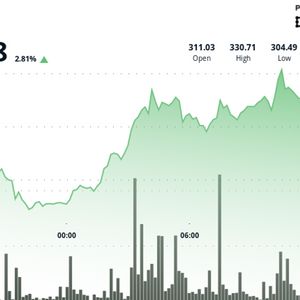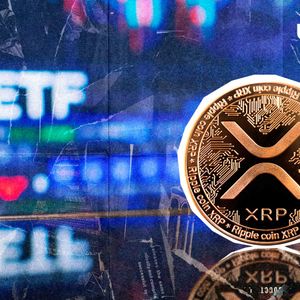Semler Scientific: Still A Cheap Proxy For Bitcoin’s Surge
6 min read
Summary Semler Scientific remains a high-leverage Bitcoin proxy, trading near BTC NAV while pursuing aggressive, accretive BTC per-share growth. The company now holds 4,636 BTC, funded through free cash flow, ATM equity raises, and $100M in convertible notes. While the core business faces short-term pressure and BTC volatility adds risk, the stock’s deep value and upside potential make it appealing for BTC bulls. In late March, I covered Semler Scientific ( SMLR ) for the first time as part of a series of articles focusing on Bitcoin ( BTC-USD ) Treasury Companies. My thesis was simple. I argued that the stock was a great bet as you were getting most of the company’s BTC holdings and cash as book value in the share price, and, thus, the rest of the company’s medical operations “for free”. My idea played out well during this period, as Semler’s stock is about 17% in less than four months. However, this appreciation wasn’t really due to a re-rating but instead due to Bitcoin’s notable appreciation to new all-time highs. In fact, Semler is still as cheap if not cheaper since my previous article, which is why I believe it remains an excellent proxy for Bitcoin exposure, assuming, of course, that you feel that the experiment Bitcoin Treasury Companies are running (i.e., leveraging the public markets to accumulate BTC in more accretive ways that can result in levered BTC returns compared to holding the actual crypto or a spot ETF like IBIT) is going to work over the long run. Where is Semler Today, and Where is It Going? As of writing this article, Semler holds 4,636 BTC , worth roughly $550 million at Bitcoin’s current price of $118,600 per coin. That’s up 45% from the 3,192 BTC they held when I first covered the stock back in March, with 1,444 new coins added for $149.6 million. The company has financed these buys through a mix of the $24.4 million in free cash flow last year from their QuantaFlo device (a blood-flow diagnostic tool for peripheral arterial disease), proceeds from at-the-market (ATM) share offerings, and the $100M 4.25% convertible senior notes issued earlier in Q1. Specifically, Semler sold 4,116,735 shares for $156.6 million in net proceeds between April 15 and July 2, 2025, under its $500 million ATM program that management launched in April 2025, which replaced their prior $150 million program. Here are all the BTC buys they did within Q2 by utilizing cash from these sources. Semler BTC Metrics (Semler IR) Semler is now the 15th-largest BTC Treasury Company, and while newcomers in the BTC accumulation game came with bigger bucks and surpassed it lately, including ProCap Acquisition Corp ( PCAPU ) and GameStop ( GME ), they will have to fight hard with Semler, as the company targets holding 105,000 BTC by the end of 2027 , and so far, has been way more committed when it comes to buying BTC regularly compared to companies like ProCap, GameStop, and Cantor Equity Partners/Twenty One ( CEP ), which quickly rose the ranks as they came in heavy from the get-go. BTC Treasury Companies (Bitcoin Treasuries Net) Convertible Debt: A Clear Example of the Value SMLR Can Create Now, if you haven’t been following BTC Treasury Companies, it’s natural to get confused. First, you wonder, what’s the point of investing in a company vs just buying the actual digital commodity, and assuming there is a point, how do I choose which BTC Treasury company to buy? The first question has an easy answer. The idea here is that BTC Treasury Companies can leverage public market instruments to achieve BTC per share accretion. As for which one to choose, it’s obviously all very speculative, since there’s often a huge gap between how well a company can leverage financial instruments and the underlying multiple the market assigns to it, and that varies significantly from case to case. In some cases, the proof of concept is rock-solid, like with Strategy ( MSTR ), but smaller companies, including Semler, have indeed shown aptitude. Their $100M coverts, which were oversubscribed, are a great example of how they can create “yield” for shareholders by leveraging the public markets. These notes, with an initial conversion price of $76.44/share , let noteholders swap debt for equity if SMLR’s stock rises above that level. However, Semler also entered into capped call transactions that are designed to reduce dilution from conversions. As management explained in the latest earnings call, these hedges raise the effective conversion price to around $170 per share , a level above which dilution actually starts to affect existing shareholders. So, for simplicity and transparency, we’ll use the $76.44 conversion price from the SEC filing. This strategy allows Semler to retire debt without using cash, issuing stock instead, turning financial leverage into greater Bitcoin exposure. The key result is an increase in Bitcoin/share, which is the very metric you care about when you invest in a BTC Treasury Company, as I mentioned earlier. Here’s how it works: Semler had 11.672 million diluted shares outstanding, including shares from prior ATM offerings and potential note conversions per their May 23rd 8-K and 4,636 BTC, or 0.000397 BTC per share. Suppose the $100 million in notes converts at $76.44, creating 1.308 million new shares, for a new total of 12.980 million shares. Suppose that $100 million bought 1,250 BTC at $80,000 per coin in early 2025. If Bitcoin hits $150,000 by 2026, for example, Semler’s 4,636 BTC would be worth $695 million, or 0.000357 BTC per share ( 4,636 ÷ 12,980,000 = 0.000357 BTC/share). Without the debt, Semler would have 3,386 BTC (i.e., excluding the 1,250 BTC it couldn’t buy) and 11.672 million shares, or 0.000290 BTC per share. That’s a 23.1% increase in BTC per share (0.000357 vs. 0.000290). At $225,000 per BTC, it’s $80.33 vs. $65.25 of Bitcoin value per share, still, of course, a 23.1% gain. In other words, the added Bitcoin from the convertible debt more than offsets the dilution, meaning every share holds more BTC, which is what warrants a premium to NAV multiple, as investors are supposed to want to pay a little extra for that accretion potential versus holding a spot ETF, which, of course, doesn’t engage in such activities. Semler is Still Cheap Despite the Risks But despite this accretion potential, Semler still trades barely above the NAV of its BTC. As I mentioned, its BTC value is now at $550 million, and its market cap is just $623 million. So you are buying the rest of the company and the debt for $173 million (debt at ~$100M), and mind you that the core business posted $24.4 million in free cash flow last year, which would price the stock at 7x FCF. Semler Annual FCF (Koyfin) Now, FCF should come in materially lower this year, reflecting real pressure on the core business. In Q1, revenue dropped 27% YoY to $11.6 million as one of Semler’s major customers scaled back purchases, and onboarding delays hit top-line growth. However, management suggested this could rebound later in the year, so even if the company doesn’t grow its FCF much from last year’s levels, the valuation multiple is still very attractive. Then you also have the risk of BTC price volatility. It’s all fine when Bitcoin is rising and investor appetite is strong, but it introduces meaningful risk. If the price of BTC falls, the company could be left with a leveraged balance sheet and underwater Bitcoin holdings, especially with its $100 million in convertible debt on the books. The exotic financing, including ATM sales and convertibles, only works if BTC performs and the market continues to reward BTC per share growth. If those assumptions break, dilution and financial strain will follow quickly, but of course, the investment case assumes you are a BTC believer in the first place, looking for a vehicle that can offer levered returns, so it all balances out risk/reward-wise. Final Thoughts Semler remains a compelling, high-conviction bet if you are bullish on Bitcoin. Its disciplined accumulation, creative financing, and proven BTC per-share accretion offer leveraged crypto exposure at a discount, considering the mNAV and the underlying core business’s free cash flow potential. I hold shares, but have found out that selling OTM puts makes for a great strategy to accumulate hefty premiums while allowing you to set your entry price. If you place your strike price at, say, 0.9X its BTC holdings, you are essentially getting a wide margin of safety, as such a notable multiple compression on the BTC book value is unlikely, all while premiums remain very high given the high volatility attached to the stock. This strategy is worth considering if you are looking to play it safe while indirectly capturing the BTC’s upside.

Source: Seeking Alpha



